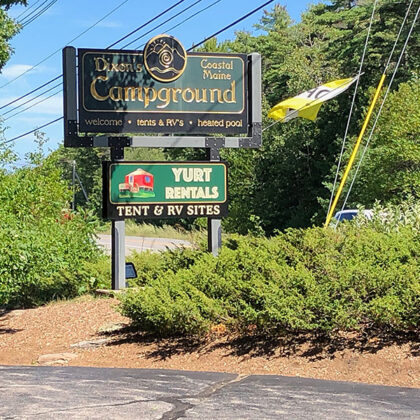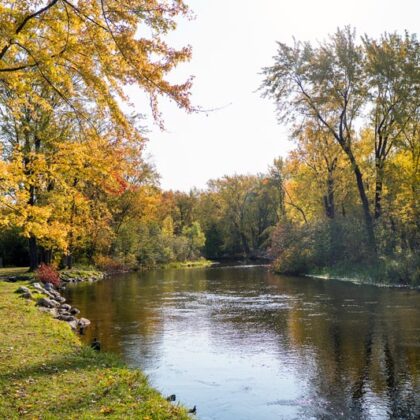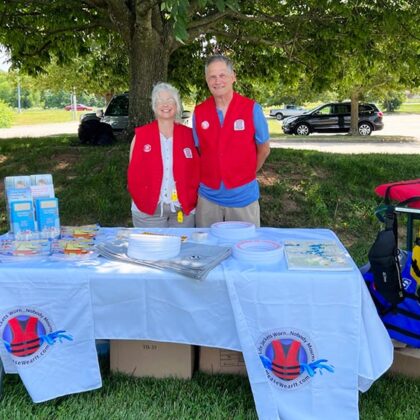By Workamper Jon Hockersmith
This article comes from an issue of Workamper News magazine. COPYRIGHT by Workamper News. IT IS A VIOLATION OF U.S. COPYRIGHT LAW TO PUBLISH, POST, BROADCAST OR PHOTOCOPY ANY PORTION OF THIS PUBLICATION.
Workamping full-time for nearly ten years, our usual seasonal migrations could be considered typical for many Workampers – a summer job in a relatively cool location and a winter job in a warm, sunny spot with a fun road trip in between. In 2016, we stepped out of that box and mixed it up a bit, opening our eyes to a whole new way to do this adventurous lifestyle.
In the summer of 2015, I worked for Rainier Guest Services as a shuttle driver in Washington state’s Mount Rainier National Park, while Sherry was a front desk and store clerk for a small motel outside the park’s southwest gate. Looking ahead to 2016, we decided it was time to enjoy a summer in Alaska, rather than head south to Arizona. When the season at Mount Rainier ended in late September, we decided to stay in Washington for the winter to shorten the trip north to Alaska in the spring.
Washington, particularly western Washington, has a reputation for wet dreary winters, but having spent many years there in our former lives we were confident we could handle that kind of weather. We knew the best chance for milder weather would be in the Puget Sound region. But where could we park…for how long…did we want to work for site or pay rent…? We found a few ads in Workamper News and other online sources, but the more we thought about it, the less we were inclined to stay in one spot for the whole winter. We wanted to be able to explore different areas, while at the same time, park rent-free.
Our solution was the Washington State Park Volunteer Host Program. We contacted the program coordinator and then submitted an application along with fingerprints acquired from a local police station for the required background check. While waiting for the check to be completed, we contacted the parks we hoped to work for during the winter using a handy list of all the parks, including contact information and available months, posted on their website.
Within a week, we acquired positions at six different state parks and one county park. Our commitment to each was just one month. No two job descriptions were the same, and the drive between parks on “moving day” was usually just a few hours or less. We were excited about the opportunity to spend so many months overall in a favorite region of ours while at the same time exploring specific areas and spending time with family and friends. We even gave it a name…Six Parks and Seven Months – the SPASM Tour.
The first stop of the tour was the Dungeness Recreation Area, a county park near Sequim, Washington and the Dungeness National Wildlife Refuge on the Olympic Peninsula in November. There we shared Campground Host duties with one other couple, but there was seldom any campers. We kept busy patrolling the trails and other areas of the park for loose trash, storm cleanup, and some trail maintenance.
In December, we moved to Dash Point State Park in Federal Way, one of the municipalities sandwiched between Seattle and Tacoma. There we were Maintenance Hosts focused on cleaning the campground, roadways, and parking lots. No bathroom cleaning though – that task was a park employee responsibility at all the state parks.
On New Year’s Day 2016, we moved north to the popular campground at Fort Casey State Park on Whidbey Island. We did the normal Campground Host duties. Sherry occasionally helped out in the office and I volunteered to clean and paint the interior of part of the historic lighthouse in the park. Our host site was a stone’s throw from the water and we had a grand view of Admiralty Inlet and ferries arriving at the adjacent terminal from our living room. With the exception of occasional strong winds blowing off the Sound, the winter weather was mild.
We enjoyed the park and our job so much we arranged to stay through February. It meant canceling a commitment at a park nearby on Whidbey Island, but first we checked out the situation there and they had no problem with the change. Luckily the SPASM acronym still worked, only then it was six parks instead of seven.
For March we moved even farther north to Larrabee State Park on the picturesque shore of Samish Bay south of Bellingham. As at Dash Point, we were Maintenance Hosts and kept busy with spring cleanup of the public areas, trails, and campground.
SPASM stop number five was way down at the southwest tip of Washington. In April, we were Interpretive Hosts in the Lewis and Clark Interpretive Center at Cape Disappointment State Park. The center sits atop a high bluff overlooking the mouth of the Columbia River and our job was to greet visitors, collect admission fees, and share information. The spring weather blowing in off the Pacific Ocean can be nasty, but we were fortunate the whole month and enjoyed the nearby coastal communities in both Washington and Oregon.
Our last stop in May was Fort Worden State Park in Port Townsend on the Olympic Peninsula. We did the usual Campground Host tasks in the woodsy, upper campground and explored the huge complex of early 20th-century gun batteries and Army post buildings.
With the SPASM tour complete, we spent the next four months playing in Alaska and Canada. Back in the lower-48 in late September, our ultimate destination for the winter was Arizona. But why not extend the SPASM tour a little so we could spend more time in some areas on our bucket list while heading south? Again, using the Internet and making a few phone calls, we were able to secure positions at state parks in Oregon and California. Just like that, we were on a mini-SPASM of sorts!
In October we were volunteer meet-and-greet Campground Hosts at William M. Tugman State Park on Oregon’s scenic south coast. Then on November 1st, we moved down to California’s Humboldt Redwoods State Park where we volunteered in the interpretive association’s visitor center for two months.
That was a great year; eight parks in 10 months. Each park location was unique and every job was different enough to keep it fun and interesting. The reasonable required hours for our site varied with the positions. In the colder and wetter months, sometimes we had to get creative in meeting the commitment. Park staff and supervisors were always easy to work with and were very appreciative of volunteers.
The SPASM tour met our expectations perfectly and we loved moving often. It also proved how easy it can be to find Workamping jobs on short notice just by being proactive and using available resources. Workamping doesn’t always have to mean a long-term seasonal position acquired months or a year in advance. We look forward to another park-hopping tour in the future.
Thanks for reading the Gone Workamping blog from Workamper News. Join Workamper.com today to see all the new job opportunities for RVers, as well as the training and resources to confidently find the right Workamping job for you – easily and securely.











